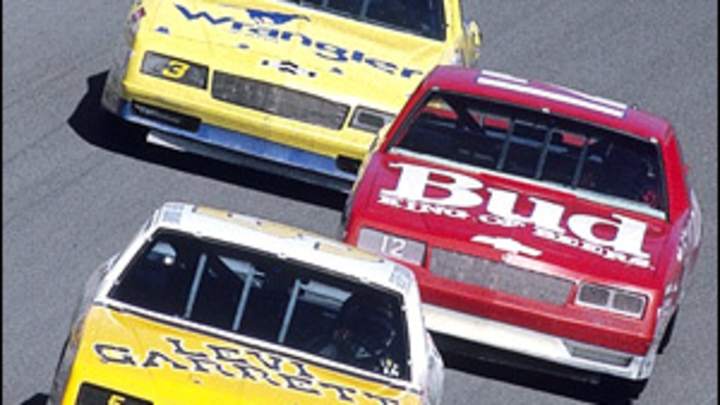Daytona 50 Years


For three decades, since the first Daytona 500 in 1959, NASCAR'S top series had been obsessed with speed. But after Bobby Allison flipped his car into Talladega's grandstand fence in 1987, a wreck that injured several spectators, the sport decided enough was enough. Racing at the superspeedways, with cars lapping at more than 200 mph, had gotten too dangerous. Thus the '88 Daytona 500 was the first race of a new era, when superspeedway events would be run with carburetor restrictor plates. With his power limited, Bobby Allison's average winning speed of 137.531 mph that year was nearly 40 mph slower than that of the previous year's winner, Bill Elliott.
But speed was the only thing reined in during the go-go '80s, a time of exponential growth for NASCAR. The Winston Cup entered the decade with just one televised race per season but would end it with a full schedule of 29. More people than ever were tuning in to a new generation of stars, including Elliott, Dale Earnhardt and Darrell Waltrip. As much as anybody, the brash Waltrip defined the decade, winning three titles and drawing millions in sponsorship money to the sport. His style had irked fans early in his career, but by the time he won his first 500, in '89, he was the circuit's most popular driver.
1980 - Buddy Baker, the tallest driver at 6' 6", also proves to be the quickest, as he sets a record for the fastest winning speed at the Daytona 500, averaging 177.602 mph. It is the first 500-mile race to be run at Daytona in less than three hours.
1981 - It had been 17 years since Richard Petty first won the 500, but with his seventh and final victory, the King becomes the winningest driver in NASCAR history, with 193. (He would go on to win 200 races.) The victory also gives Petty his largest purse ($90,575).
1982 - Bobby Allison takes checkered flag number 2 at the 500 as he gears up to win the '83 Cup, two titles that eluded brother Donnie.
1983 - He did it in a Mercury in '68. He did it in a Chevy in '77. Cale Yarborough wins his third 500, this time in a Pontiac.
1984 - After becoming the only driver to win three Cup titles in a row (1976-78), Yarborough (back in a Chevy) becomes the second driver, after Petty, to win back-to-back 500s.
1985 - For winning the Daytona 500, the Winston 500 and the Southern 500, Bill Elliott receives a $1 million bonus from NASCAR sponsor R.J. Reynolds. That year Million Dollar Bill wins 11 races. He goes on to win the Cup three years later.
1986 - Geoff Bodine -- one of only 19 drivers still on the track at the end of the race -- outlasts Dale Earnhardt to win the 500 after Earnhardt pits with three laps to go, overshoots his crew, then has engine trouble. Bodine's win gives owner Rick Hendrick his first Harley J. Earl Trophy.
1987 - Petty leads just two laps, but the short-lived surge is enough for the King to set a 500 record for most races led (20) and most laps led (780). Elliott takes the checkered flag.
1988 - Two months and 11 days after his 50th birthday Bobby Allison reaches another milestone with his third victory in the 500, becoming the oldest driver to win the race, finishing just ahead of his son Davey. Both Allisons celebrate their achievement in Victory Lane. It is the first race that requires the use of restrictor plates.
1989 - After 17 tries, Darrell (Jaws) Waltrip, driving car number 17, wins his first 500 by taking a gamble at the end. How much fuel does he have to spare? "Well, for five dollars I'd drink what's left," he replies. In Victory Lane, Waltrip celebrates by doing his version of Cincinnati Bengals running back Ickey Woods's Ickey Shuffle and then spiking his helmet.
